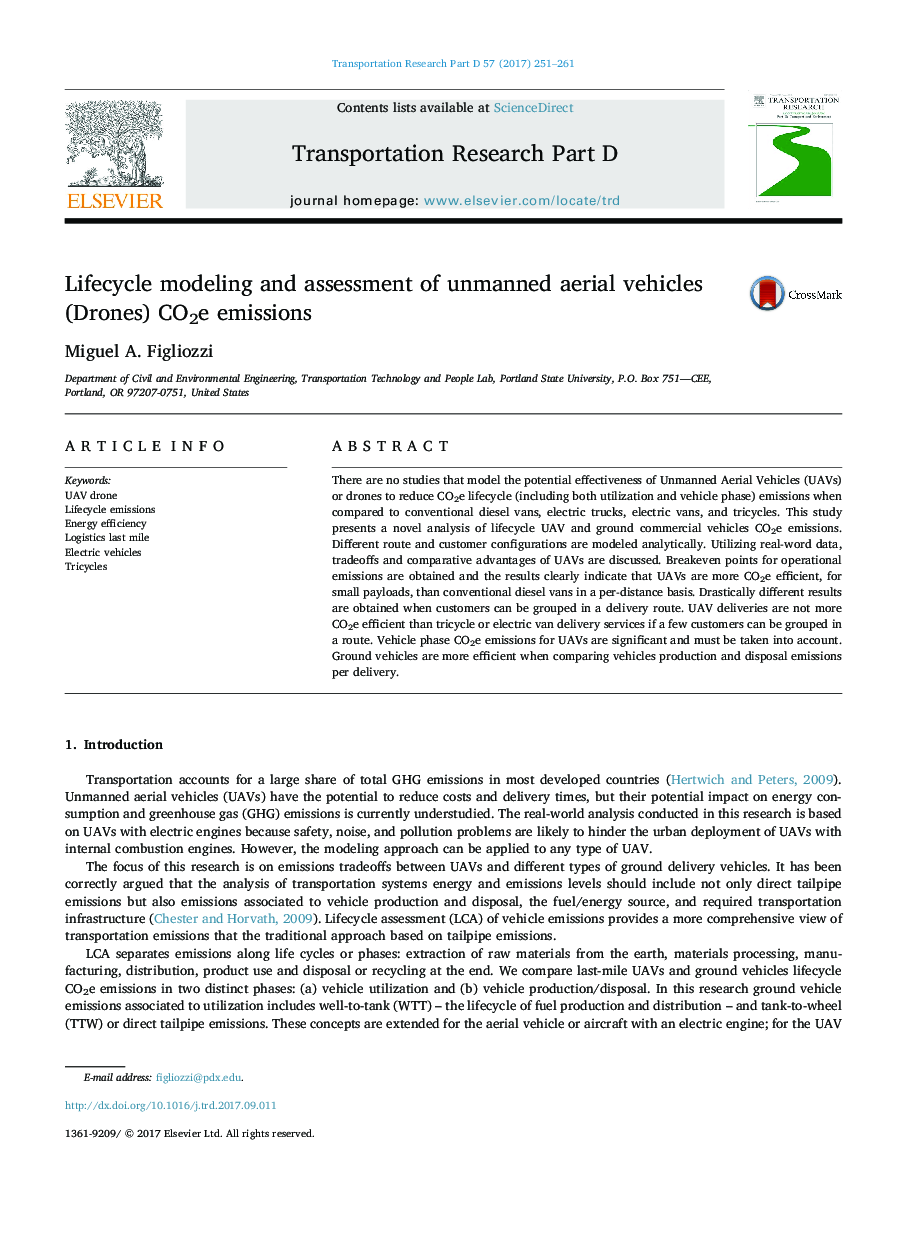| کد مقاله | کد نشریه | سال انتشار | مقاله انگلیسی | نسخه تمام متن |
|---|---|---|---|---|
| 5119314 | 1485867 | 2017 | 11 صفحه PDF | دانلود رایگان |

- UAVs are more efficient in terms of energy consumption/emissions per unit distance.
- UAV vehicle phase emissions are significant and must be taken into account.
- UAVs more efficient in sparsely populated areas with low delivery density/payload.
- Ground vehicles become more efficient if full payload is taken into account.
- Electric tricycles most efficient in dense urban areas and multistop routes.
There are no studies that model the potential effectiveness of Unmanned Aerial Vehicles (UAVs) or drones to reduce CO2e lifecycle (including both utilization and vehicle phase) emissions when compared to conventional diesel vans, electric trucks, electric vans, and tricycles. This study presents a novel analysis of lifecycle UAV and ground commercial vehicles CO2e emissions. Different route and customer configurations are modeled analytically. Utilizing real-word data, tradeoffs and comparative advantages of UAVs are discussed. Breakeven points for operational emissions are obtained and the results clearly indicate that UAVs are more CO2e efficient, for small payloads, than conventional diesel vans in a per-distance basis. Drastically different results are obtained when customers can be grouped in a delivery route. UAV deliveries are not more CO2e efficient than tricycle or electric van delivery services if a few customers can be grouped in a route. Vehicle phase CO2e emissions for UAVs are significant and must be taken into account. Ground vehicles are more efficient when comparing vehicles production and disposal emissions per delivery.
Journal: Transportation Research Part D: Transport and Environment - Volume 57, December 2017, Pages 251-261